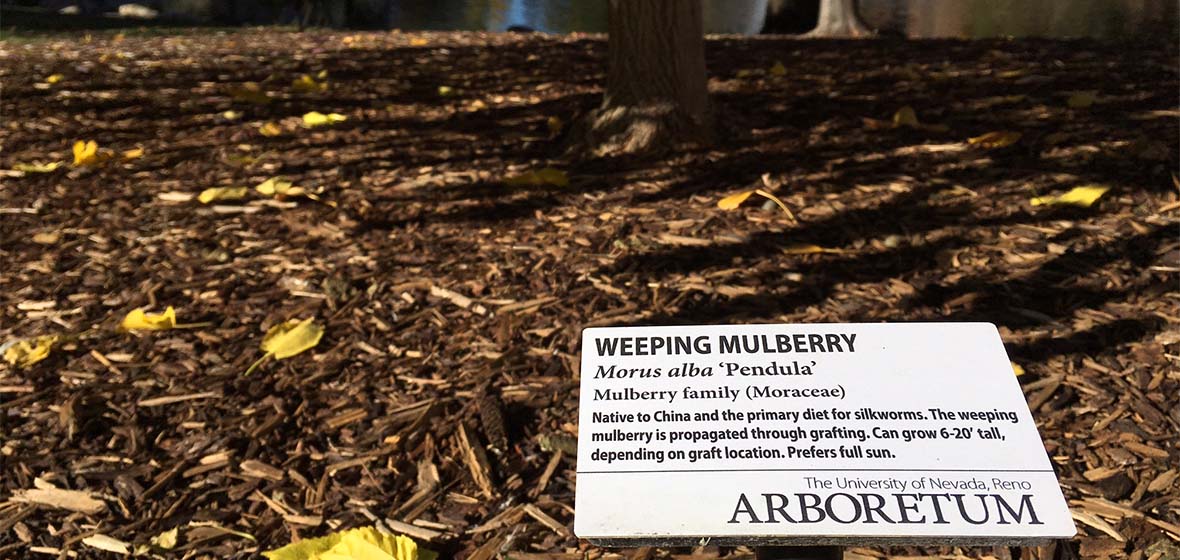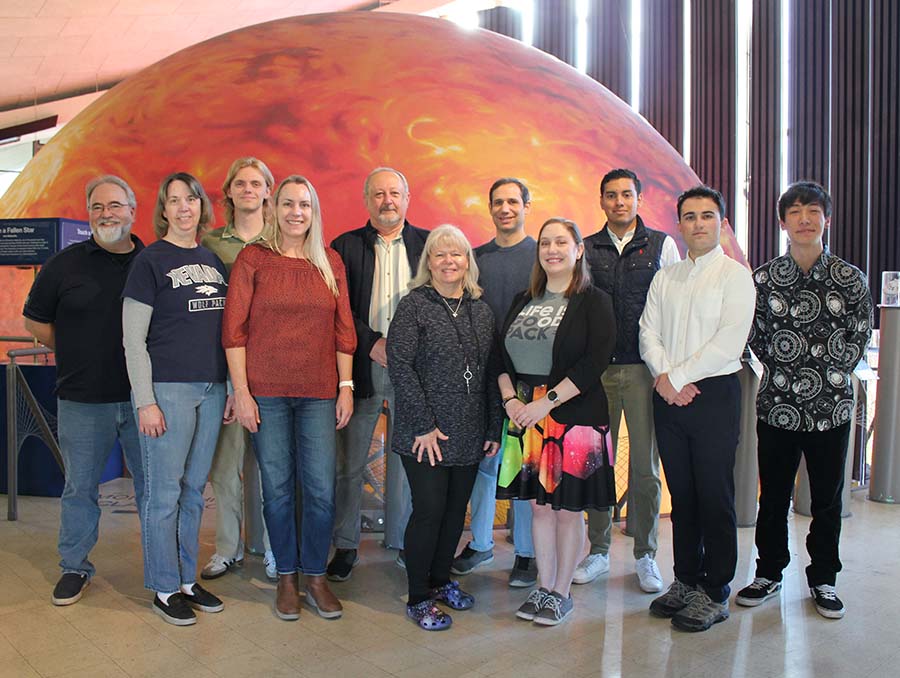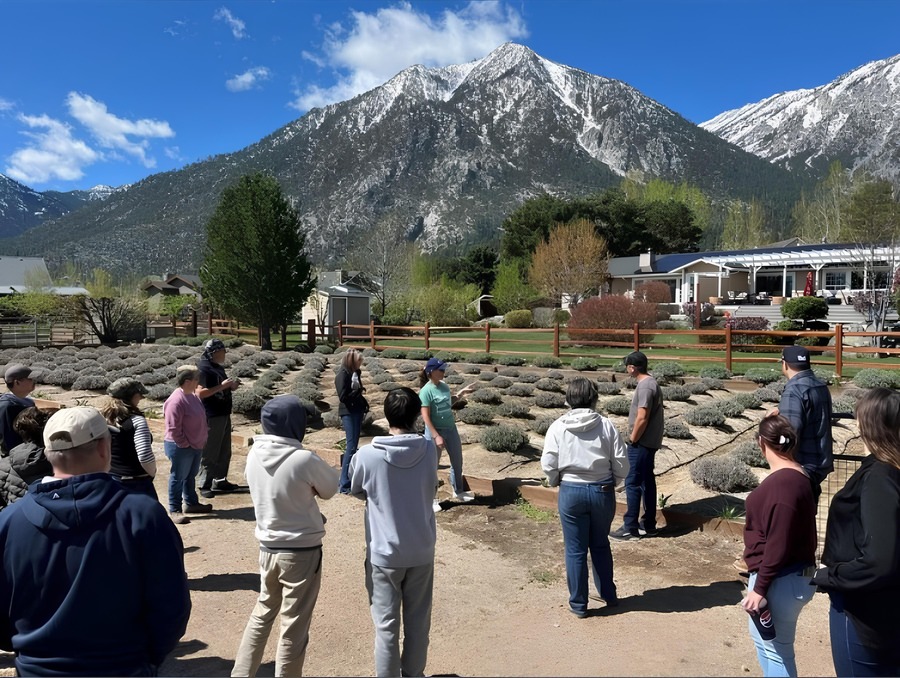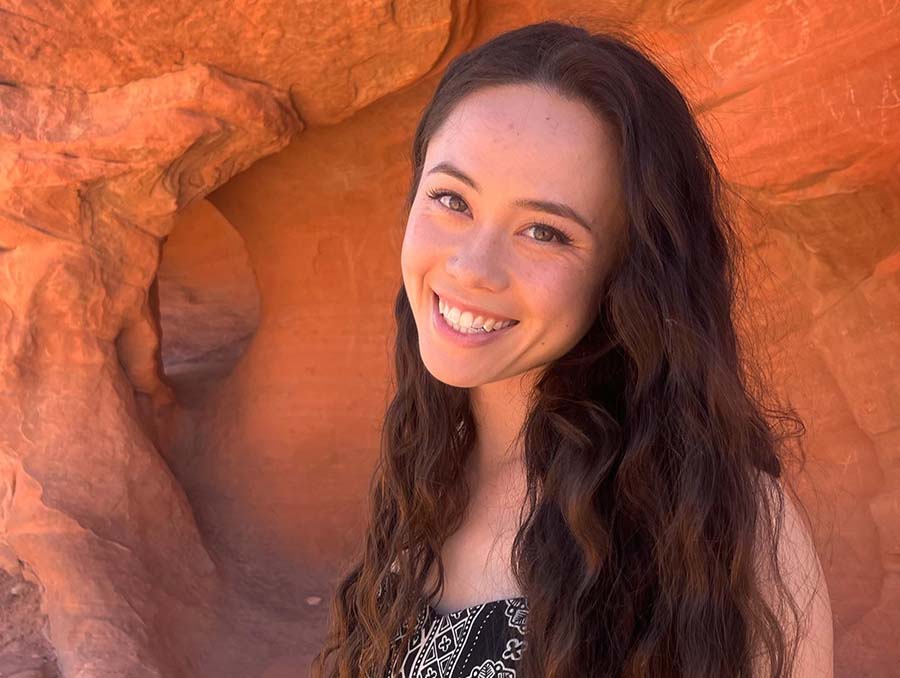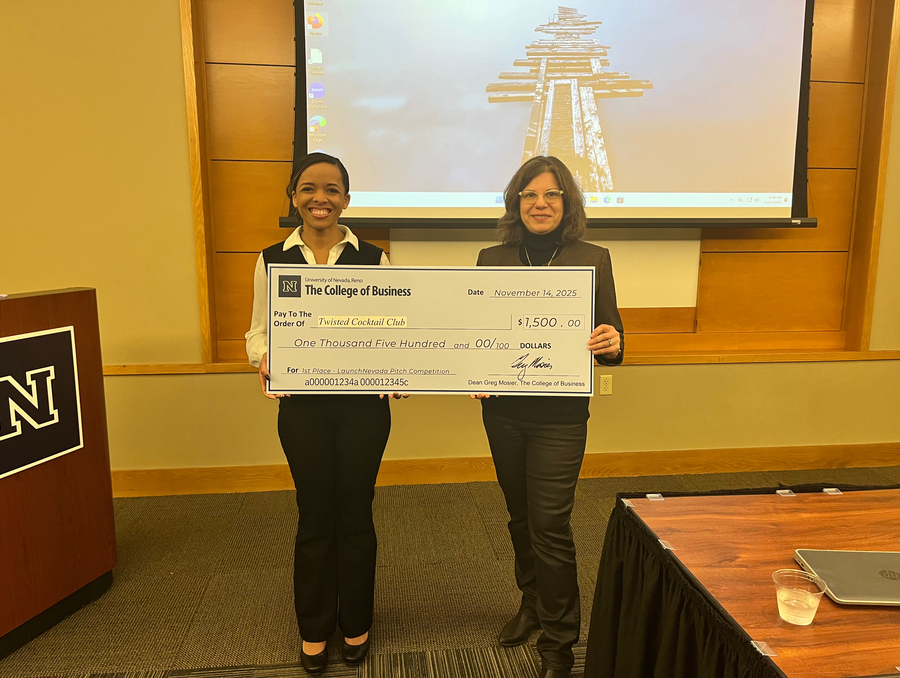On Monday, Nov. 7, members of the University of Nevada, Reno Arboretum Board together with University student volunteers installed 25 tree identification markers on campus. The markers were placed in favorite pedestrian areas-the historic Quad, the Center Street entrance and Manzanita Lake. These newest tree markers join the first batch of 30 tree markers that were placed last spring on south campus locations and in Hilliard Plaza.
Cheryll Glotfelty, chair of the University Arboretum Board explained that an arboretum is a "tree museum," a collection of living plants.
"What would it be like to go into a museum and have nothing labeled?" Glotfelty said. "How would you know what you are looking at?"
Museums best serve their educational mission when their treasures have interpretive labels. Hence, the Arboretum Board obtained permission from the University to gradually add tree markers around campus to identify species and provide botanical information on selected trees in the campus's collection of more than 3,000 trees, representing almost 200 different species.
Glotfelty said that in the next several years, the Arboretum Board and Grounds Services would like to achieve the benchmark of 200 different tree species on campus, which would put the University about 10 species ahead of UNLV.
"We currently are in a stealth competition to beat UNLV in tree species," Glotfelty said. "People who want to support the cause can click the donate button on the Arboretum's website or purchase a tree in the Commemorative Tree Program," she said.
The Arboretum Board partnered with Ground Services to identify suitable locations for the tree markers that do not interfere with landscape maintenance. Marty Sillito, Assistant Director of Grounds Services, provided expertise and hand tools for the project.
Glotfelty explained that the mission of the Arboretum Board is to "plan university landscape, conduct research and educate the public."
"The tree markers are a good way to educate the public," Glotfelty said. "They really help people better notice and appreciate the trees of campus, and even aid them in planning what to plant in their own yards. We also offer a free public lecture series and guided tours of the arboretum."
This year, Christoph Weber, an Arboretum Board member who is also a certified arborist, wrote the text for the tree markers. A "glue party" was held the previous week at Glotfelty's home in Spanish Springs to glue the 3" x 5" tree marker plaques onto steel stakes. Then, on a beautiful, crisp Monday morning, starting at 8:00 AM, 13 Arboretum Board members, staff volunteers, and students dug 25 holes 18 inches deep, using a combination of a rented power auger and hand tools.
"We first had to clear the locations with USA Digs," Glotfelty said. "We had to avoid hitting power lines, fiber-optic cables and water lines. I've seen the maps, and there is a veritable spiderweb of underground wires, cables, and pipes forming an underground network that we don't want to tangle with."
The University was designated a state arboretum in 1985. The campus is home to a diverse collection of plants, trees, shrubs, flowers, ornamentals and native flora with many designated areas on campus open to the public.
